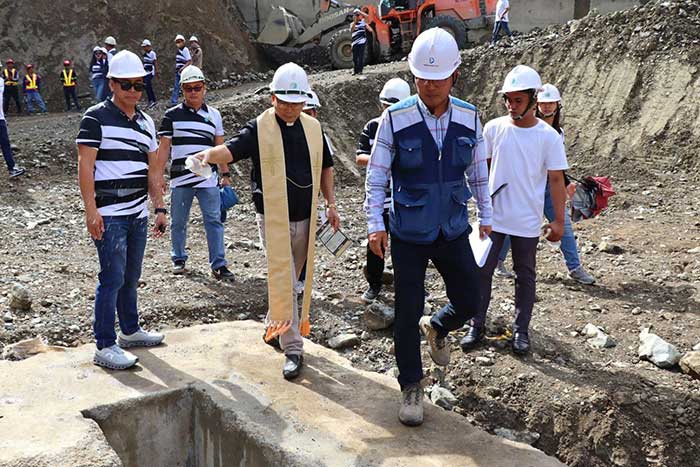By Rjay Zuriaga Castor
The National Irrigation Administration (NIA) has commenced the water impoundment for the 109-meter Jalaur High Dam, part of the P11.2 billion Jalaur River Multi-Purpose Project Stage II (JRMP II) in Calinog, Iloilo, on Wednesday, May 8.
“We have already lowered our gates to close the diversion tunnel of our Jalaur High Dam. We have sealed off the inlet, the entrance of the diversion tunnel, to allow the water to flow through our waterway towards the dam,” JRMP-II spokesperson Steve Cordero told Daily Guardian.
Cordero explained that during the construction of the Jalaur High Dam in 2019, a 310-meter-long diversion tunnel was erected to redirect the river flow away from the dam site.
The impoundment process involves gradually filling the dam reservoir with water until it reaches full capacity.
In the first month following the plugging of the dam, the water level is expected to reach an elevation of 123 meters, or 39 meters above sea level.
Over the following months, the level is projected to rise to 143 meters or 59 meters above sea level, and eventually to 189 meters or 105 meters above sea level after 13 months.
“This is just a preparatory phase. Eventually, if the structure becomes fully operational, that’s when we will begin the impoundment of water to reach a level of 105 meters above sea level. At the moment, we are in the initial stages of the process, focusing on the waterway,” Cordero added.
Authorities have imposed a ban on various activities in the vicinity of the reservoir and buffer zone, including construction of structures such as stalls, pens, and fishponds.
Practices such as slash-and-burn farming, agriculture, and planting within the reservoir and buffer zone are strictly prohibited, as are activities like hiking, swimming in the river, hunting, and fishing.
The reservoir area of the high dam encompasses approximately 600 hectares, affecting eight indigenous peoples’ barangays in Calinog.
The Jalaur High Dam has an estimated capacity of 250.70 million cubic meters for irrigation and bulk water supply.
“If we have continuous rain, we can completely fill the reservoir of the JRMP-II promptly. More or less, since we started this May, maybe by May or June next year, we can expect to be finished. This is a long, tedious process,” Cordero noted.
As of the end of April this year, the JRMP II project has achieved 74.45 percent overall physical accomplishment.
The dam reached its designed height of 109 meters or an elevation of 194 meters above sea level in November 2023.
The construction is scheduled to be completed by September 2024, with full operation expected to commence in late 2024 or early 2025.
“We are still on track with the implementation of the JRMP II. In fact, the impounding is a milestone and part of the scheduled activities for the dam,” Cordero said.





















